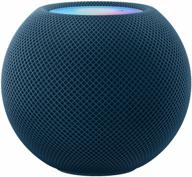
Review on 10-Pack TRS Male Plug 3 Pole 1/8 inch 3.5mm Solder 🔌 Type DIY Audio Cable Connector | Ideal for Headphone and Headset Repair by Dustin Citizen

I spent 10 years in the US Air Force soldering aircraft audio headset jacks on a B-52H.
And I have to say I've had a damn hard time using these connectors. So I dispute the seller's claim that they are "easy to work with" and "no need to be a pro". More on that aspect of the product later, but first the bottom line: I have doubts about the quality of these connectors because I had to do 3 tries and blow 3 of them before I got one to work. And the only reason the third one worked for me is because I used epoxy. Not to change the solder, but after the soldering is done and you crimp the strain relief all the way and before you heat shrink it and screw on the back shell, plug it in to test. It works. Yes! But if you move the cable a little bit, you can be static here and cut it. Or you can combine the right and left channels into one and turn the headset into a mono headset. boo! Now I know I have good solder joints. So what could it be? Upon closer inspection, the left audio and ground connection points are moving - they have rotated and are touching an adjacent connection. I pulled out an unused one but they don't spin. So what happened is that during the soldering process the plastic melted and they are now spinning. However, as an experienced professional solderer, I know how to keep the heating time of solder joints to a minimum. The pin that the microphone is connected to moves when the wire is pulled because there is literally a strain relief clip on that pin. And I could see it wiggling, it would lead to a connection on that center pin. It would be extremely unlikely that if I had heat shrunk it and zipped it up it would happen to be in the working position. — and even if it happened by accident, it wouldn't last long. So next I mixed in some epoxy and poured a big dollop of epoxy over all the internal parts. So the epoxy keeps those spinning pins from moving and makes it so that when you press that mic + pin it's not able to short out anything. Of course you have to put it in working position and let it cure. I connected the sound source to make sure it worked, then carefully disconnected and applied epoxy. You have to be careful because if you make that blob of epoxy too big/greasy you won't seal the plastic shell. takes a few hours). Once it had healed enough to stop leaking, I plugged it in and made sure it was still working. It was, but if it wasn't I would pull the wires into the position they worked and hold them there to heal them. Back shell included. Tested and still working. Now it's the next day and I'm testing it and tightening the wire well. And I can't make it short Yes! I don't see this without the use of epoxy. Even if you manage not to melt the connector when soldering, given the way the strain relief is constructed, I don't think it will work in the long run. The epoxy will make this work work for a long time. I think that's why there are so many reviews about it here that they fail pretty quickly. Now back to the points "Easy to use" and "You don't have to be a professional". This really depends on the wire you are working with. If you're working with wire where each individual wire is quite thick, you won't have a very difficult time. But the two headsets I worked on yesterday, one Turtle Beach and the other Logitech, the cables inside are very good. The strands are so thin that it is extremely difficult to even strip the wire without cutting it into strands. The good wire strippers I had couldn't do that. I had to use a razor blade and grope around. Sorry, but I don't see very many laypeople who can strip wires without losing the thread of foundation. The next problem is that if you have very thin internal wires, you won't be threading those wires through the holes in those connectors. Oh, and by the way, some jacks don't have a Mic+ hole! Some do, most don't. WTF? I ended up having a better time without the hole. Just wrap the wire around the side of the pin and solder it to the pin. An additional problem is that depending on the wire, you may not be able to thread the inner wires through the holes in the other pins. By the way, it is correct to pull the wire through the hole from the inside to the outside. If you do it the other way around - outside in - leave the extra wire in the middle - where it shorts the center pin. My wire was too thin to thread through these holes. And tinning the wire and then feeding it in didn't work either. So I soldered each wire, with the wire coming from the inside but on the side of the pin (not through the hole), and soldered the wire to the pin on the outside. Solder joints, and the rest was done using the epoxy process I described. But, there I am in the topic. In order to work with these wires and do this type of job, you really need to understand how the wire works. Each of these thin wires - and each strand in the ground wires - has an insulating sheath that is not visible. The wires appear to be bare and touch strands, but they are not. You should melt the wires in the places you want to solder and only burn the required amount. If it burns too hard, the wires may touch. So use a lighter and move the wire across the flame and once it starts to glow blow it out. If it didn't burn enough, do it again. But if it burns too much you'll have to start over, which means going back to the first step, stripping off a little more and losing 1/4 inch of the length on that cord. You fill the wire. Using a soldering iron, heat the wire at this point and touch it with solder and the wire will "suck up" some of the solder. If you bought a flux, it will be even easier for you. Flow makes everything better. I apply flux to the pins before soldering the wire - not only will you get a better solder joint - the flux is also tacky so it can hold the wire in place while soldering. lol. Once the wires are tinned, melt the pin and solder each wire. I started with a wire in the middle. You should have a soldering iron with a tip small enough to get in and heat that spot so you can put a tiny drop of solder on it. Yes, you can bend the other pins outwards a bit to make room. With that center wire already tinned and cut to the right length, you place that wire where it just touches that center pin and you heat it with an iron, which fuses the solder in the wire and the solder on that pin together. It takes less than a second to heat up. And you won't do it without one of those "handset" devices or something you can think of yourself because you can't hold a plug, wire, or soldering iron. After the center pin is soldered and you check with an ohmmeter that it isn't touching any other pins, then lightly crimp the crimp holding the wire. Not full, but enough to hold that wire and provide some relief during use. The rest is pretty easy. For each wire, you melt the pin, melt the (previously tinned) wire, maneuver the wire to touch the pin (outside), and solder the wire to the pin. Then use an ohmmeter to check that the pin is not touching the other. Now for the ground wires. The wire you are working with probably has a set of gold strands that act as ground for the left and right audio. There is also a ground for a microphone. The wire that is the microphone is probably wrapped in two-tone wires. All of these wires are ground for the microphone signal. You may notice that this connector does not have 5 pins. What you do is twist the audio ground and mic ground together, burn, flux and tin the insulation and then solder THIS to the "ground" pin in that connector. That's all. Does it sound like "easy to use" or "no need to be a pro"? I would definitely say no. To do this job properly, you will need: an ohmmeter, a soldering iron with a very small tip (which is unlikely unless you are a professional), flux, solder (should be flux), auxiliary hands, a magnifying glass. and epoxy resin. Yes, more about this epoxy step. The more I look at this finished connector, the more I'm glad I decided to fill it with epoxy. The strain relief on the back panel is not welded to the wire. While the strain relief protects fairly well against bedding, it does NOT provide any protection against tire judder. The only thing that provides strain relief from jerking is a very small pinch inside the connector. It's such a small crimp that I can't say it offers good anti-twitch protection. So, through the epoxy process, I also greatly improved the anti-twitch performance. So if I were to do it again I would think epoxy is the necessary step and do it again. Does THAT sound like "easy to use" or "no need to be a pro"? And I didn't even mention the topic of cold solder joints. Oh God. Cold soldering is bad and not good and will break. What is that? When soldering a wire to a pin, if you heat the wire more than the pin, the solder will stick firmly to the wire but not to the pin. It connects and seems to work, but it's a weak "cold" soldering that will most likely fail. You can tell whether solder is "cold" by the fact that solder does not shine but appears matt. If you heat the pin more than the shield it will be a cold joint and you will see that the solder soldered to the pin is shiny but dull on the top of the wire. If you heat the wire and pin at the same time, you will get a completely shiny solder. This is your goal. The problem is that heating the contact can cause the plastic inside the connector to melt. So work fast. I couldn't get good solder joints without melting the connector so I had to coat it with epoxy. Maybe next time I'll turn down the heat on my iron a bit. It would be nice if instructions were included and exactly what the correct temperature of the iron should be. Otherwise it's a guesswork. In fact, if you turn down the heat of the iron (even if yours is adjustable, probably not), you'll have to keep the iron on the tooth longer and transfer heat to the plastic longer. So a higher temperature might actually be better. It's all over now. I wish you success and good luck in your endeavors. I hope what I wrote here will be useful to someone somewhere.
- Cables and Connections
- I'll add later
New products
Comments (0)
Top products in 🔌 Cables
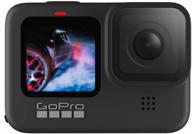
GoPro HERO9 (CHDHX-901), 23.6MP, 5120x2160, 1720 mA, black

32 Review
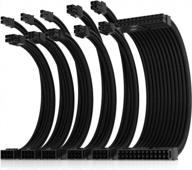
Asiahorse 16AWG Pro Power Supply Sleeved Cable For Power Supply Extension Cable Wire Kit 1X24-PIN/ 2X8-PORT (4+4) M/B,3X8-PORT (6+2) PCI-E 30Cm Length With Combs(Dual EPS Black)

14 Review
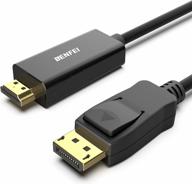
High-Quality BENFEI DisplayPort To HDMI Cable For Seamless Connectivity Across Lenovo, HP, ASUS, Dell And Other Brands!

18 Review
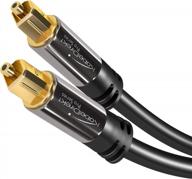
Premium Fiber Optic Cable For Enhanced Audio Experience: CableDirect TOSLINK 25 Ft Audio Cable For Soundbars And Home Theaters

18 Review


